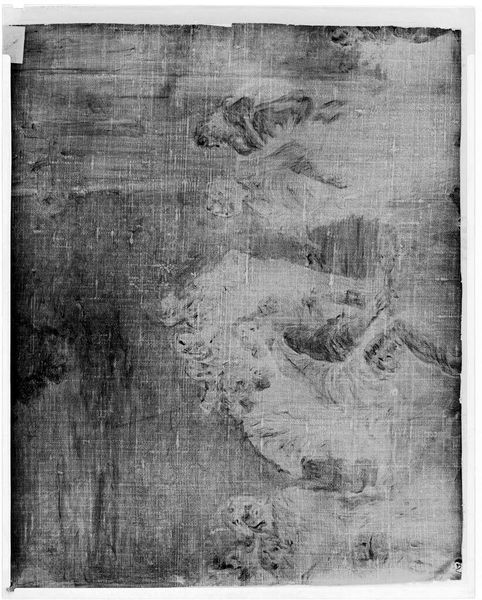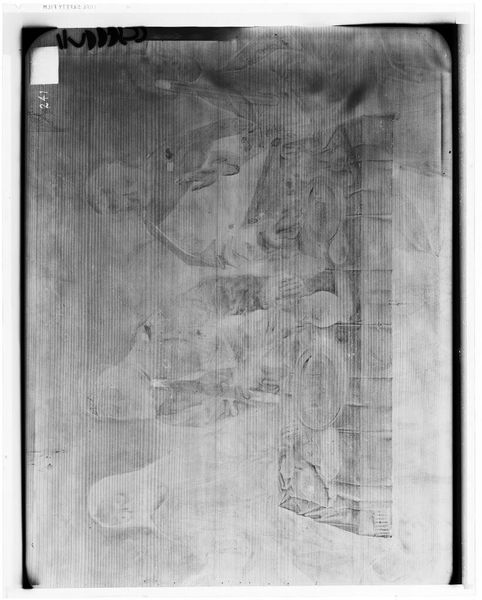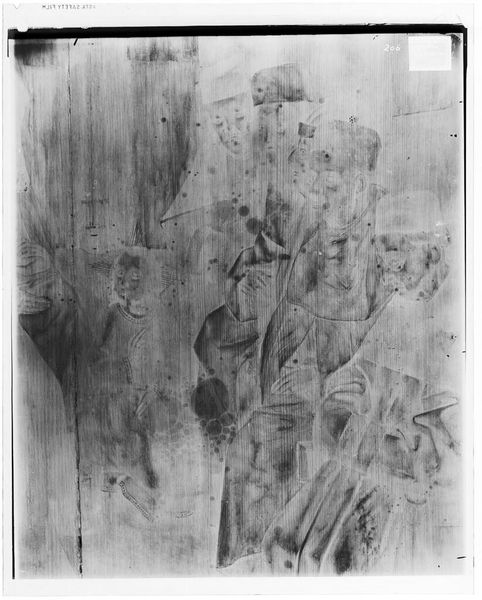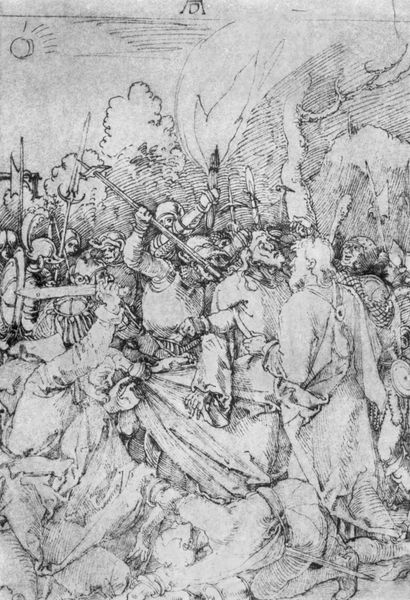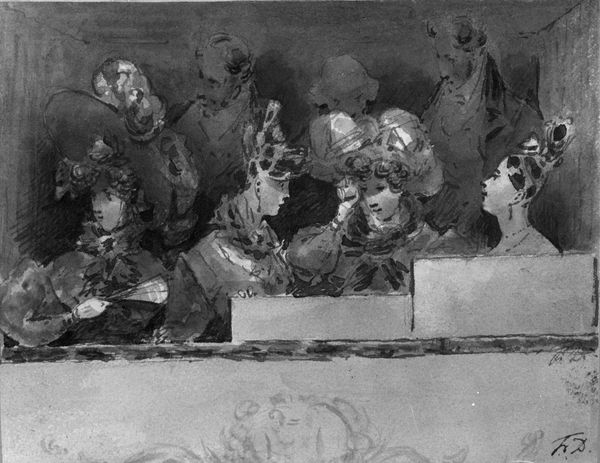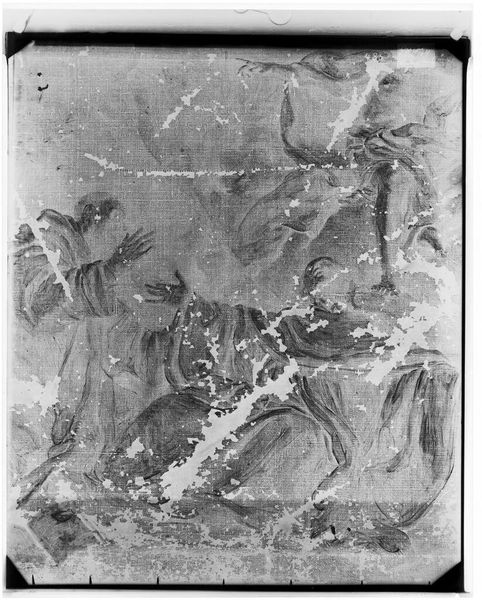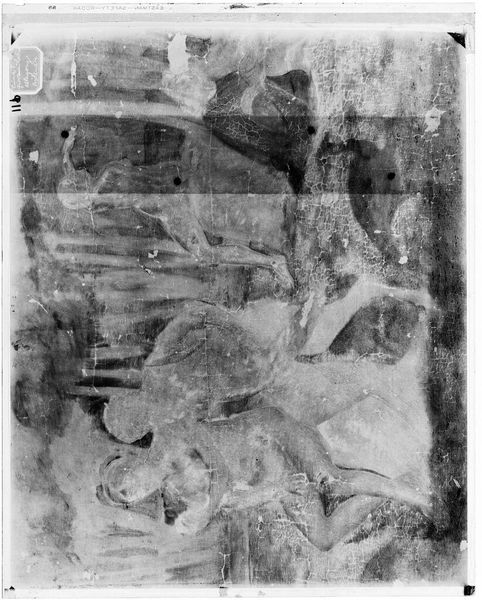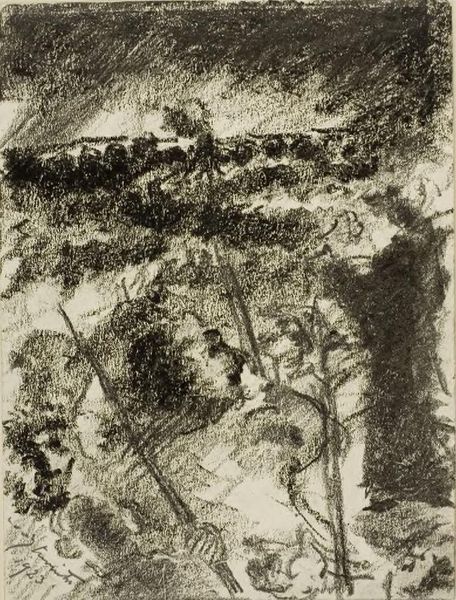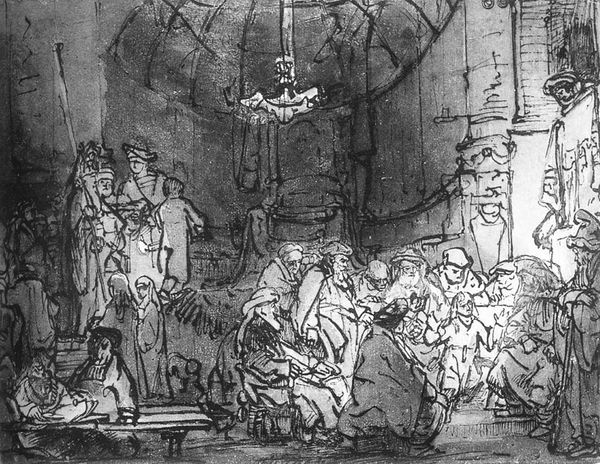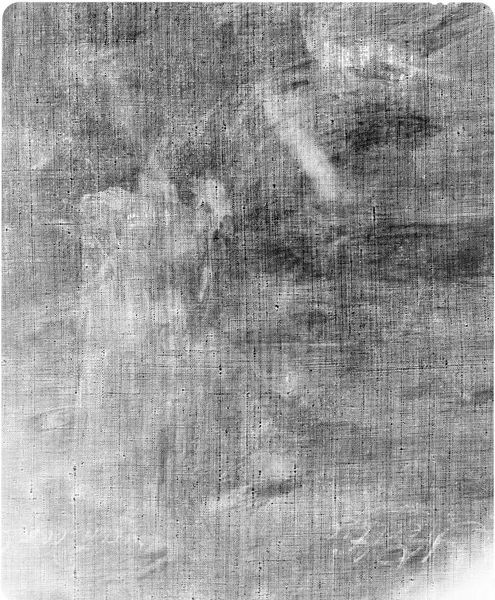
drawing
#
drawing
#
figuration
#
history-painting
#
italian-renaissance
Dimensions: 201 mm (height) x 158 mm (width) (bladmaal)
Curator: Let's delve into this fascinating drawing, "Right half of Leonardo's Last Supper," dating back to the 16th century, currently housed here at the SMK. Editor: My immediate reaction is somber, almost ghostly. The monochrome palette and faded details create a sense of history weighing down on the figures. It really emphasises the original's inherent narrative about power and its misuse through male dominance. Curator: Absolutely. Consider this not just as a study but as a testament to the intense labor and materiality involved in replicating Leonardo's iconic fresco. The drawing medium itself transforms the monumental scale and detail of the original. It’s the work of craftspeople and their understanding, their manual knowledge. Editor: Precisely, and that transformation also shifts the context. This isn't just a reproduction; it’s an interpretation filtered through another hand, another perspective deeply embedded in the prevailing political power. The Renaissance, despite its artistic brilliance, perpetuated many harmful social structures. It mirrors an exclusive circle of white, European, wealthy men who controlled patronage, aesthetics and legacy. Curator: Agreed. Think of the drawing itself, its material components: the paper, the ink, where did these resources come from? Who processed them? The materiality of the artwork leads us down paths of production and consumption within 16th-century society. These drawings weren't solely for aesthetic appreciation. They facilitated the circulation of ideas and artistic styles. Editor: And within those circulated ideas are also implicit assumptions of religious and political power, all wrapped within the imagery of this infamous dinner table scene. Curator: The act of replicating it itself then serves to underline these concepts while transforming a monumental image into a commodity accessible for the drawing room and personal enjoyment. Editor: The reproduction of "The Last Supper" as a drawing highlights how even iconic imagery becomes embedded within larger socio-political structures, perpetuating power dynamics through the careful control and curation of art. Curator: And through the simple study of a drawing's materials and production, we get a view of the larger artistic and cultural landscape of the period, its reliance on craft practices and artisanal expertise. Editor: That's right, recognizing the layered contexts informs the work's overall meaning, inviting us to examine how artwork mirrors, perpetuates, or perhaps even contests norms.
Comments
No comments
Be the first to comment and join the conversation on the ultimate creative platform.
